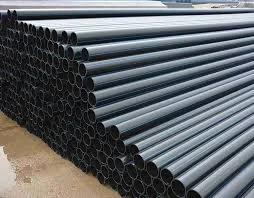Nov . 09, 2024 08:03 Back to list
PPR Pipe Fittings Quality and Applications Guide for Efficient Plumbing Solutions
Understanding PPR Pipe Fittings A Comprehensive Guide
In recent years, PPR (Polypropylene Random Copolymer) pipe systems have become increasingly popular in various fields, from plumbing to industrial applications. Known for their durability, resistance to corrosion, and ease of installation, PPR pipe fittings play a crucial role in ensuring efficient and safe fluid transportation. This article explores the key features, benefits, applications, and installation procedures of PPR pipe fittings, providing a comprehensive understanding of this essential component.
What are PPR Pipe Fittings?
PPR pipe fittings are components made from polypropylene random copolymer, designed to connect different sections of PPR pipes. These fittings come in various shapes and sizes, including elbows, tees, couplings, and reducers, allowing for versatile configurations in piping systems. The characteristic green or gray color of these fittings not only gives them a modern aesthetic but also signifies their specific functionality in plumbing systems.
Advantages of PPR Pipe Fittings
1. Durability and Longevity PPR fittings are known for their excellent durability. They can withstand high temperatures (up to 95°C) and pressures, making them suitable for hot water applications. With a lifespan of over 50 years, PPR fittings often outlast other materials, leading to fewer replacements and repairs.
2. Corrosion Resistance Unlike metal fittings, PPR fittings are completely resistant to corrosion. This property makes them ideal for transporting potable water and chemicals without any risk of contamination, ensuring safe and reliable fluid transfer.
3. Lightweight and Easy to Install PPR fittings are significantly lighter than their metal counterparts, making them easy to handle and install. Their fusion welding method allows for seamless connections that eliminate leaks and require less time and effort during setup.
4. Cost-Effective While the initial investment of PPR piping systems may be slightly higher than traditional materials, the long-term savings from reduced maintenance, repairs, and replacements make them a cost-effective solution.
5. Environmental Impact PPR materials are environmentally friendly. They are recyclable and can be reused, contributing to a reduction in waste and promoting sustainability in construction practices.
Applications of PPR Pipe Fittings
ppr pipe fittings

PPR pipe fittings are versatile and are commonly used in various applications, including
- Residential Plumbing For hot and cold water supply systems, ensuring safe drinking water and efficient heating systems. - Heating Systems Used in underfloor heating and radiator connections due to their high thermal resistance. - Industrial Applications Transporting chemicals and other liquids in manufacturing and processing plants. - Agricultural Systems For irrigation systems, offering a durable solution for transporting water across fields without the risk of leakage.
Installation of PPR Pipe Fittings
Installing PPR pipe fittings involves some specialized techniques due to the fusion welding process. Here’s a brief overview of the installation steps
1. Cutting Safely cut the PPR pipes to the desired lengths using a pipe cutter or saw, ensuring clean, straight cuts. 2. Preparing the Fitting Clean the ends of the pipes and the inside of the fittings to remove any dust or debris, which ensures a strong bond.
3. Heating Use a fusion welding machine to heat the ends of the pipes and fittings simultaneously to the correct temperature (usually around 260°C).
4. Joining Once heated, quickly push the pipe and fitting together to create a joint. Hold them in place for a few seconds to allow the material to cool and form a solid bond.
5. Testing After installation, it’s essential to test the system for leaks before putting it into full operation.
Conclusion
PPR pipe fittings represent an innovative solution for modern plumbing and industrial systems. Their durability, corrosion resistance, and ease of installation make them a preferred choice for a variety of applications. As sustainability becomes increasingly important in construction, PPR fittings offer an eco-friendly alternative, aligning with the goals of modern infrastructure development. By understanding the features and benefits of PPR pipe fittings, professionals can make informed decisions that enhance the efficiency and reliability of their piping systems.
-
HDPE Natural Sheet: Durable, Food-Grade & Versatile Plastic Solutions
NewsAug.27,2025
-
Durable Glossy PVC Rigid Sheet | Premium High-Shine Panels
NewsAug.26,2025
-
Durable PP Rigid Sheet: Lightweight, Chemical Resistant Solutions
NewsAug.21,2025
-
PVC Grey Sheet for Extraction: Chemical Resistant & Durable
NewsAug.19,2025
-
Durable PVC Pipe Fittings for Plumbing & Irrigation Needs
NewsAug.18,2025
-
HDPE Steel Belt Reinforced Spiral Corrugated Pipe | High Strength
NewsAug.17,2025

